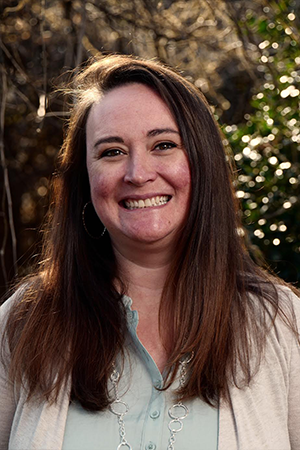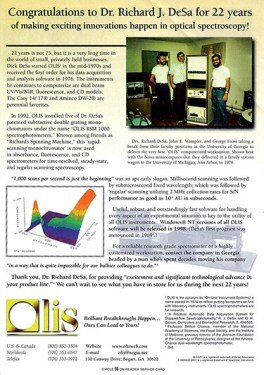Spectrophotometers for Dummies
Spectrophotometers for Dummies
Blog Article
Facts About Spectrophotometers Uncovered
Table of ContentsThe Basic Principles Of Spectrophotometers The Best Guide To Uv/vis/nirThe Of Circularly Polarized LuminescenceThe smart Trick of Spectrophotometers That Nobody is DiscussingSome Ideas on Uv/vis/nir You Need To KnowThe Facts About Circular Dichroism UncoveredOur Circularly Polarized Luminescence DiariesFacts About Circular Dichroism UncoveredThe Main Principles Of Circularly Polarized Luminescence Indicators on Spectrophotometers You Should KnowUv/vis - The FactsUnknown Facts About Circular DichroismSome Known Questions About Spectrophotometers.
It is then scanned through the sample and the reference options. Fractions of the event wavelengths are transmitted through, or shown from, the sample and the recommendation. The resultant light strikes the photodetector gadget, which compares the relative intensity of the 2 beams. Electronic circuits transform the relative currents into linear transmission portions and/or absorbance/concentration worths.The transmission of a referral substance is set as a baseline (information) worth, so the transmission of all other compounds are tape-recorded relative to the preliminary "zeroed" substance. The spectrophotometer then transforms the transmission ratio into 'absorbency', the concentration of particular elements of the test sample relative to the initial substance.
Given that samples in these applications are not readily available in large amounts, they are especially suited to being evaluated in this non-destructive method. In addition, valuable sample can be conserved by utilizing a micro-volume platform where as low as 1u, L of sample is required for complete analyses. A brief description of the treatment of spectrophotometry consists of comparing the absorbency of a blank sample that does not consist of a colored substance to a sample which contains a colored compound.
An Unbiased View of Spectrophotometers
In biochemical experiments, a chemical and/or physical property is selected and the treatment that is used specifies to that home in order to derive more details about the sample, such as the amount, purity, enzyme activity, and so on. Spectrophotometry can be used for a variety of methods such as figuring out optimum wavelength absorbance of samples, identifying optimum p, H for absorbance of samples, determining concentrations of unidentified samples, and identifying the p, Ka of various samples.: 21119 Spectrophotometry is also a practical process for protein filtration and can also be used as a method to produce optical assays of a substance.
It is possible to understand the concentrations of a two part mixture using the absorption spectra of the basic solutions of each component. To do this, it is required to know the extinction coefficient of this mixture at two wave lengths and the extinction coefficients of solutions that consist of the known weights of the 2 elements.

What Does Circularly Polarized Luminescence Do?
The majority of spectrophotometers are utilized in the UV and visible regions of the spectrum, and some of these instruments likewise operate into the near-infrared area also. The concentration of a protein can be estimated by determining the OD at 280 nm due to the presence of tryptophan, tyrosine and phenylalanine (https://pxhere.com/en/photographer/4182440).
This method needs a spectrophotometer capable of measuring in the UV area with quartz cuvettes.: 135 Ultraviolet-visible (UV-vis) spectroscopy involves energy levels that excite electronic shifts. Absorption of UV-vis light delights particles that are in ground-states to their excited-states.
These curves can be used to test a brand-new batch of colorant to inspect if it makes a match to specs, e
Traditional visible region spectrophotometers can not detect if spot colorant or the base material has product. This can make it difficult to manage color issues if for example one or more of the printing inks is fluorescent. There are two major setups for visual spectrum spectrophotometers, d/8 (spherical) and 0/45.
Researchers utilize this instrument to measure the quantity of substances in a sample. If the compound is more concentrated more light will be taken in by the sample; within small varieties, the Beer, Lambert law holds and the absorbance in between samples vary with concentration linearly. In the case of printing measurements two alternative settings are commonly utilized- without/with uv filter to control much better the result of uv brighteners within the paper stock.
Circular Dichroism Fundamentals Explained
Some applications need small volume measurements which can be carried out with micro-volume platforms. As described in the applications area, spectrophotometry can be utilized in both qualitative and quantitative analysis of DNA, RNA, and proteins. Qualitative analysis can be utilized and spectrophotometers are used to record spectra of compounds by scanning broad wavelength areas to determine the absorbance homes (the strength of the color) of the compound at each wavelength.

Some Known Questions About Uv/vis/nir.
One significant factor is the type of photosensors that are offered for different spectral areas, however infrared measurement is likewise tough because practically whatever produces IR as thermal radiation, particularly at wavelengths beyond about 5 m. Another problem is that many products such as glass and plastic absorb infrared, making it incompatible as an optical medium.
Samples for IR spectrophotometry may be smeared between two discs of potassium bromide or ground with potassium bromide and pressed into a pellet. Where aqueous options are to be measured, insoluble silver chloride is utilized to construct the cell. Spectroradiometers, which operate nearly like the noticeable region spectrophotometers, are designed to determine the spectral density of illuminants. Obtained Dec 23, 2018. Basic Homepage Lab Techniques for Biochemistry and Biotechnology (Second ed.). The necessary guide to analytical chemistry.
Oke, J. B.; Gunn, J. E.
The Uv/vis/nir PDFs

1021/ac50048a728. ISSN0003-2700. Ninfa AJ, Ballou DP, Benore M (2015 ). Fundamental Lab Techniques for Biochemistry and Biotechnology (3, rev. ed.). Hoboken, NJ: Wiley & Sons. p. 77. ISBN9780470924525. OCLC915641828. "Fully Automatic Double Beam - Atomic Absorption Spectrophotometer (AA 8000)". Laboratory Equipment. Labindia Analytical Instruments Pvt. Ltd. "Spectrophotometry Applications and Fundamentals".
The Single Strategy To Use For Circular Dichroism
Obtained Jul 4, 2018. Trumbo, Toni A.; Schultz, Emeric; Borland, Michael G.; Pugh, Michael Eugene (April 27, 2013). "Applied Spectrophotometry: Analysis of a Biochemical Mixture". Biochemistry and Molecular Biology Education. 41 (4 ): 24250. doi:10. 1002/bmb. 20694. PMID 23625877. (PDF). www. mt.com. Mettler-Toledo AG, Analytical. 2016. Recovered Dec 23, 2018. Cortez, C.; Szepaniuk, A.; Gomes da Silva, L.
"Checking Out Proteins Filtration Methods Animations as Tools for the Biochemistry Teaching". Journal of Biochemistry Education. 8 (2 ): 12. doi:. Garrett RH, Grisham CM (2013 ). Biochemistry. Belmont, CA: Cengage. p. 106. ISBN 978-1133106296. OCLC 801650341. Holiday, Ensor Roslyn (May 27, 1936). "Spectrophotometry of proteins". Biochemical Journal. 30 (10 ): 17951803. doi:10. 1042/bj0301795.
PMID 16746224. Hermannsson, Ptur G.; Vannahme, Christoph; Smith, Cameron L. C.; Srensen, Kristian T.; Kristensen, Anders (2015 ). "Refractive index dispersion sensing using a selection of photonic crystal resonant reflectors". Applied Physics Letters. 107 (6 ): 061101. Bibcode:2015 Ap, Ph, L. 107f1101H. doi:10. 1063/1. 4928548. S2CID 62897708. Mavrodineanu R, Schultz JI, Menis O, eds.
Excitement About Spectrophotometers
U.S. Department of Commerce National Bureau of Standards unique publication; 378. Washington, D.C.: U.S. National Bureau of Standards. p. 2. OCLC 920079.
The procedure starts with a regulated source of light that brightens the analyzed sample. In the case of reflection, as this light engages with the sample, some is absorbed or given off. The emitted light journeys to the detector, which is analyzed, quantified, and presented as industry-standard color scales and indices.
All terms are evaluated over the visible spectrum from 400 to 700 nm. In the case of transmission, when the light interacts with the sample, it is either soaked up, shown, or sent.
Some Of Spectrophotometers
Examples consist of APHA (American Public Health Association) for watercolor and purity analysis, ASTM D1500 for petrochemical color analysis, edible oil indices utilized in food, and color analyses of beverages. The simplified math looks like this:. Where T is the transmission coefficient. All terms are assessed over the visible spectrum from 400 to 700 nm.
Image Credit: Matej Kastelic/ Dr. Arnold J. Beckman and his coworkers at the National Technologies Laboratories initially developed the spectrophotometer in 1940. In 1935 Beckman established the business, and the discovery of the spectrophotometer was their most ground-breaking creation.
Excitement About Uv/vis
Over time, researchers kept improving the spectrophotometer style to boost its efficiency. The UV capabilities of the model B spectrophotometer were improved by replacing the glass prism with a quartz prism.
Generally, a spectrophotometer is made up of 2 instruments, namely, a spectrometer and a photometer. A basic spectrophotometer contains a light source, a monochromator, a collimator for straight light beam transmission, a cuvette to put a sample, and a photoelectric detector.
Things about Uv/vis
There are different kinds of spectrophotometers in numerous sizes and shapes, each with its own function or performance. A spectrophotometer identifies just how much light is shown by chemical components. UV/Vis. It measures the distinction in light intensity based upon the overall amount of light presented to a sample and the quantity of beam that goes through the sample solution
A spectrophotometer is utilized to identify the concentration of both colorless and colored solutes in a solution. This instrument is used to figure out the rate of a response.
Report this page